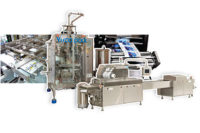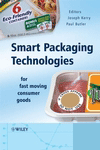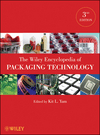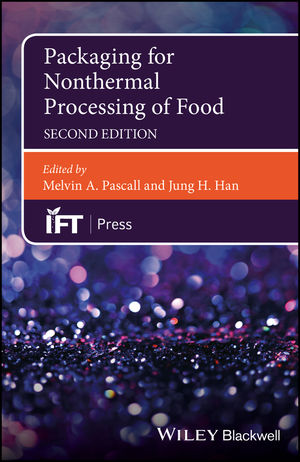Machinery Technology
Developments in form fill seal machinery emerge from PACK EXPO

The Integrity is rated at 10 to 15 cycles per minute and is designed to meet USDA meat, poultry, dairy and 3-A Sanitary Standards.

The new tna robag FXIS 3ci series for polyethylene packaging, is designed with performance, simplicity and flexibility in mind.

Ishida vertical form fill seal bagmakers are specifically designed for different snack food applications and price points.

The ADAMS 12 boosts filling to 33 bags per minute.




Form fill seal (FFS) machinery was on display at PACK EXPO International 2012, touting fast speeds, easy to use interfaces and seamless efficiency. I reached out to FFS experts to fill me in on what customers are demanding and what new technologies are emerging in today’s changing packaging landscape.
Meet the contributors:
Jeff Almond, snack industry manager for packaging systems at Heat and Control, Inc.
Shayne De La Force, group marketing manager at tna solutions
Gudrun Gibson, marketing manager at Haver Filling Systems
Mike Summersett, director of operations, horizontal product line at Ossid
Food and Beverage Packaging: What is the biggest demand customers have for FFS machinery?
Almond: In general, our customers want low lifecycle cost and high value from their bagmaker investment. Flexible packaging formats are increasingly important to snack manufacturers. The ability to produce four-sided bags, block-bottom bags, and different sizes of pillow bags on the same machine improves production flexibility and reduces costs for equipment and floor space.
De La Force: Customers are demanding two things from FFS machinery. Firstly, they want to achieve the highest possible performance on their existing packaging systems. To improve performance within the same machinery footprint, the systems need to operate at a higher speed and efficiency, but with less waste. The second benefit that customers are demanding is flexibility. We see this particularly with respect to co-packers, where a broad range of products are being produced and packaged at one plant. Flexibility here means having the capability to switch production between products, seasoning flavors, bag sizes or bag types as quickly as possible.
Gibson: Customers are changing to FFS from other less efficient systems because they want the option of having their product packaged in a plastic bag. Plastic bags use minimal film and generate less product waste - with the highest product compaction. These systems provide extra food safety, extended shelf life, cleanliness and customer appeal (through high-resolution, full color images printed directly on the packaging).
Summersett: The biggest demands are ease of sanitation, utilization of least cost materials and the need for predictive maintenance information.
FBP: What new technologies have emerged to address consumer demand?
Almond: Heat and Control offers the unique Ishida Atlas Flex bagmaker which produces a variety of different bag formats, including four-sided hem seal, block-bottom and pillow. Atlas Flex delivers tremendous versatility and is available with a direct-mounted Ishida weigher to reduce platform costs and floor space requirements, while using a single integrated remote control for both machines. We also supply upgrade kits for other Atlas bagmakers to produce gusseted, block-bottom and four-sided seal (hem) bags. What makes this unique is the ability to convert back to pillow pouch efficiently and utilize all the features required for snack food packaging.
De La Force: Earlier this year we introduced our new tna robag® 3ci, which provides up to a 30% improvement in performance in both output and reduction in rejects. With improved modularity and core component capability, the tna robag 3ci is also completely upgradable to any combination of jaw size or configuration (rotary single, double, triple or rotary flat jaw), granting food manufacturers full flexibility of bag size, type and application on a single system.
Gibson: One new technology we have developed is the ADAMS technology, which allows our customers to fill powders into FFS bags.
Summersett: New heat contact coatings are constantly being developed to allow for thinner and thinner gauge materials to run on FFS machines. The evolution of smarter machine controls has allowed the development of good tracking tools to assist in the gathering of predictive maintenance information.
Looking for a reprint of this article?
From high-res PDFs to custom plaques, order your copy today!














